Pulpit Rock, Jurassic Coast
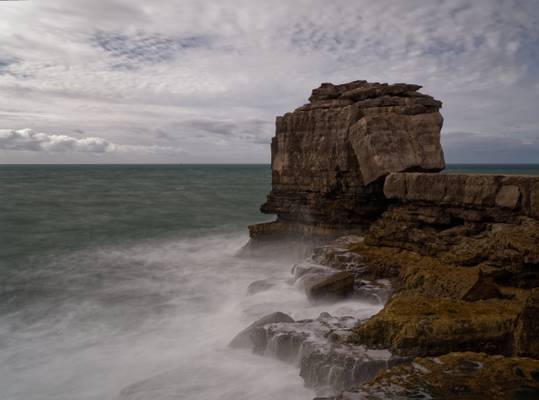
0
The name "Portland Bill" has its roots in "The Beel" as named on early maps. This derived from the beak shape of Portland Bill. From 1588 onwards, when the area was part of a crucial Armanda invasion-warning network, it was often named "The Beacon". Quarrying began at Portland Bill in the mid 19th century but remained a small scale operation into the early 20th century. Quarries were on the west side of the bill and stone was transported along a short tramway to a shipping quay, now the site of Red Crane. An area absorbed into the quarries was White Hole, where quarrymen cut away a natural arch to form Pulpit Rock in the 1870s. It was intentionally left as a quarrying relic and was formed with religious associations; the large slab of rock leaning against the main stack depicted an open bible leaning on a pulpit. Surrounding the rock is the rather charmingly-named Snail Shore, a surface containing snail, oyster and mollusc shells that once made up a Jurassic seabed thriving with marine life around 150 million years ago.

0
**Join me @ Facebook | Google+ | Twitter | 500px | Instagr | YouTube **
Europe - UK - England - Dorset - Jurassic...
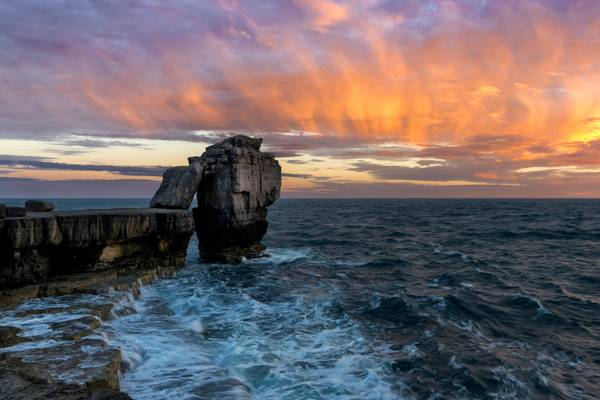
0
I jhimages.co.uk I Facebook I Twitter I Instagram I 500px |
What a wonderful sight can be found in Dorset. This is the Pulpit Rock which a firery...
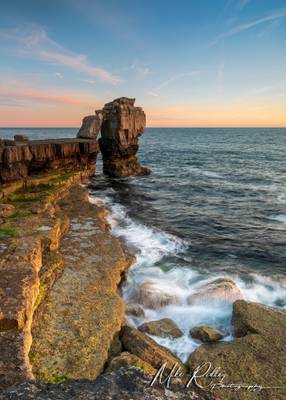
0
One from yesterdays outing to dorset ... The side light on pulpit rock at Portland bill was just so intense .. beautiful to see & capture.
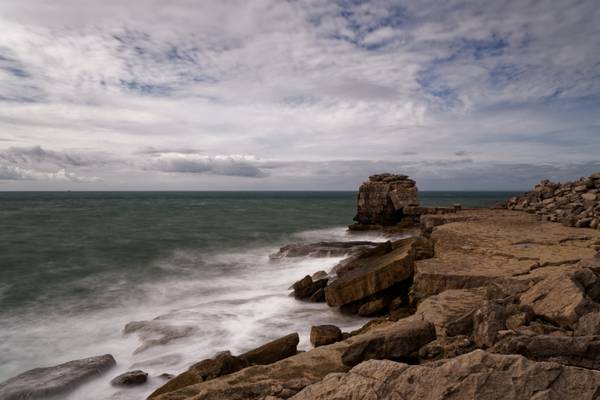
0
The name "Portland Bill" has its roots in "The Beel" as named on early maps. This derived from the beak shape of Portland Bill. From 1588 onwards, when the area was part of a crucial Armanda invasion-warning network, it was often named "The Beacon". Quarrying began at Portland Bill in the mid 19th century but remained a small scale operation into the early 20th century. Quarries were on the west side of the bill and stone was transported along a short tramway to a shipping quay, now the site of Red Crane. An area absorbed into the quarries was White Hole, where quarrymen cut away a natural arch to form Pulpit Rock in the 1870s. It was intentionally left as a quarrying relic and was formed with religious associations; the large slab of rock leaning against the main stack depicted an open bible leaning on a pulpit. Surrounding the rock is the rather charmingly-named Snail Shore, a surface containing snail, oyster and mollusc shells that once made up a Jurassic seabed thriving with marine life around 150 million years ago.
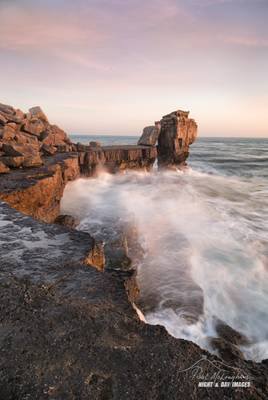
0
Waves surge in at sunset pounding the ledges around Pulpit Rock, Portland Bill, Dorset. It looks pretty fragile on its eroding base but I guess it...
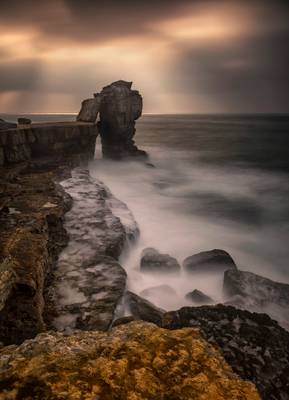
0
Taken yesterday morning during a 1-2-1 tuition day with a new client. Great conditions by lunchtime.
UK & Iceland Landscape Photography Workshops,...